
Why has the subject of United States Federal Milk Marketing Orders (FMMOs) garnered increased attention in recent times? Why do they matter, and how do these orders impact milk prices across America? It’s a complex topic that requires meticulous dissection to fully comprehend the nuanced dynamics at play.
Implemented initially during the Great Depression, the Federal Milk Marketing Orders were intended to stabilize and standardize prices across the milk industry, and to safeguard the livelihoods of dairy farmers. However, their impact on current milk pricing, both directly and indirectly, has raised questions regarding their continued relevance and efficacy in today’s market.
Consumers, dairy producers, and policymakers alike require a comprehensive understanding of the functioning and repercussions of these orders. To this end, we delve into the intricacies of US Federal Milk Marketing Orders and analyze their sway over milk prices in the domestic market. We seek to challenge the status quo, ask difficult questions, and ultimately foster an enlightened conversation on this crucial matter.
- Do these orders still serve the industry as intended, or have they become a relic of a bygone era?
- How do FMMOs affect dairy farmers, consumers, and the dairy industry at large?
- What change, innovation, or regulation could potentially optimize the current situation?
This article aims not only to inform but also instigate dialogue and inspire action. We present this critical evaluation with an eye towards assessing the present in order to shape a progressive dairy industry for the future.
Overview of Federal Milk Marketing Orders (FMMOs)
For many, the term ‘Federal Milk Marketing Orders’ (FMMOs) might seem esoteric. But delve a little deeper, and one unearths a complex regulatory apparatus devised to maintain optimal conditions for the nation’s milk market. Instituted by the Agricultural Marketing Agreement Act of 1937, FMMOs are legally sanctioned, industry-driven initiatives used as tools to stabilize the chaotic milk market during the Great Depression(1). Gradually, they have evolved to govern milk pricing, classification, pooling, and buyer payment stipulations across diverse geographical areas throughout the United States.
The Federal Milk Marketing Orders cover about 67% of all milk produced in the United States.
As of today, there are 11 FMMOs in operation, each corresponding to a separate geographical area. These orders are administrated by local dairy farmer boards under the supervision of the USDA’s Agricultural Marketing Service. They are as follows:
- Upper Midwest at Minneapolis: Known for high dairy production, including cheese.
- Central at Kansas City: A crucial hub for milk distribution in the heartland.
- Mideast at Cleveland: Encompasses dairy farms in Michigan, Indiana, Ohio, Pennsylvania, and West Virginia.
- Pacific Northwest at Seattle: Includes the states of Oregon, Washington, Northern Idaho, and parts of California.
- Southwest at Dallas: Covers Texas, New Mexico, and Oklahoma, with a mix of small and large dairy farms.
- Southeast at Atlanta: Services the states of South Carolina, Georgia, and Alabama, with a predominance of fluid milk and cream products.
- Appalachian at Knoxville: Operates in the states of Kentucky, Tennessee, and parts of Indiana and Ohio.
- Florida at Tampa: Recognized as unique due to its geographical isolation and high Class I utilization.
- Northeast at Boston: Encompasses New England and parts of New York, servicing diversified dairy operations.
- Arizona at Phoenix: Home to both large-scale industrial dairy farms and small, artisanal producers.
- California at Sacramento: The newest FMMO, introduced in 2018, an essential part of America’s most productive agricultural state.
The Central Marketing Area has the lowest minimum price for Class I milk at $16.70 per hundredweight.
It’s irrefutable that FMMOs play a paramount role stabilizing in dairy markets, ensuring fair competition, and guarding the interests of dairy farmers.
The role of FMMOs is manifold. Principally, they serve to:
- Stabilize the dairy market by setting minimum milk prices, based on a complex formula reflecting market trends and operational costs.
- Ensure that dairy farmers are compensated equitably, regardless of fluctuating marketplace conditions.
- Promote market transparency and cultivate competitiveness to benefit both farmers and consumers.
Is it not imperative for us, then, as active participants in this industry, to comprehend the impact of FMMOs on milk prices wholly? Beyond mere understanding, we must critically analyze their ongoing relevance and effectiveness in a dramatically transformed, globally integrated dairy market.
Class Pricing System
As one delves deeper into the labyrinthine realms of Federal Milk Marketing Orders (FMMOs), an intriguing aspect comes to the forefront – their sophisticated system of class pricing. Not a mere design of whimsy, this mechanism is a well-tested tool to categorize milk on the basis of its end usage. Let’s us, for a moment, don our analytical hats and muse over this: Is this pricing system a shield protecting dairy farmers from market volatility, or a shackle hindering the industry’s progression and adaptation to a free-market economy?
We find that under the FMMOs, there are four distinct classifications (Class I, II, III and IV) for milk.
- Class I represents fluid milk, the product that is delivered directly for consumption. This category enjoys the highest price in the FMMO system. This is attributed to the argument that the demand for fluid milk is inelastic, borne from economic perspectives and the historical context of the dairy industry. The shift to a Class I skim milk price formula in May 2019 exemplifies how pricing schemes incentivize specific classifications.
- Class II encompasses soft dairy products, which are deemed as less premium compared to Class I. While the end products are consumable, they don’t fetch as high a price as Class I fluid milk. Cheese spreads, ice cream, and yogurt are some typical items that fall under this category.
- Hard cheeses, the end products that define Class III, are subject to market fluctuations to a greater extent. While being a crucial component of the dairy chain, they do not garner the high prices that fluid milk does. Therefore, their pricing is often complex, taking in various factors such as commodity prices and components.
- Class IV represents butter and dry products. This category is often overlooked due to its more processed nature but is integral to the broader spectrum of the dairy industry. Despite not being as highly priced as Class I fluid milk, these products still play a vital role within the market dynamics. Notably, the pricing systems for these products often rely on component pricing rather than the end product pricing formula that is dominant in the FMMO system.
| Class |
Product Type |
Example Products |
Typical Price Range |
| I (Fluid Milk) |
Direcly Consumable |
Fluid Milk |
High |
| II (Soft Products) |
Intermediate Consumption |
Cheese Spreads, Ice Cream, Yogurt |
Medium |
| III (Hard Cheeses) |
Intermediate Consumption |
Hard Cheeses |
Variable |
| IV (Butter and Dry Products) |
Processed Consumption |
Butter, Powdered Milk |
Low to Medium |
Vegan skeptics may question the complexity of this division, but insiders know just how indispensably handy these classifications can be. Milk destined for fluid products falls under Class I, while Class II sees use in soft products like yogurt. Class III and IV represent harder dairy products and butter/powder respectively.
The pricing system is founded on the principle of ‘use value’. As the name suggests, it determines the value of milk based on how it is used – whether it’s sold directly for consumption, or processed into cheese, yogurt or other dairy products. A critical question here is, does this system inadvertently create more hurdles for farmers and processors or does it ensure more equitable pricing?
Now, bringing our focus towards the impact this system has on milk prices, we observe a dynamic interplay of several factors. Class I milk typically commands the highest price, reflecting the value placed on milk as a fluid, consumable product. This pricing hierarchy is set to reflect the ‘use-value’ of milk in the different classes. However, this also introduces a level of price volatility farmers must contend with. For instance, smaller farmers, who primarily supply Class III or IV milk, might find their profit margins squeezed when Class I prices rise significantly. A further examination of these implications raises poignant questions about the fairness and efficacy of the FMMOs class pricing system.
Minimum Prices and Price Discovery
A paramount aspect that the Federal Milk Marketing Orders (FMMOs) play in the dairy industry is defining the prices our dairy farmers can sell their milk for. Defining these so-called “minimum prices” is far from trivial. The FMMOs do not merely list a set amount that milk must cost but employ profound considerations, nuanced schemes, and hard-hitting market realities to put a minimum price tag on a gallon of milk.
“What impact do these minimum prices—the backbone of the FMMO system—have, and how exactly do they get determined? Can we say with confidence that they offer fair compensation to the hardworking dairy farmer while keeping the milk reasonably priced at your grocery store?”
- Addressing a Complex Pricing Procedure: The FMMOs use a complex, but far from arbitrary, system to set minimum prices that include elements such as milk’s end-use category and the average manufacturing and marketing costs.
- A Facet of Monopsony: The minimum prices provide relief from potential monopsony behavior in the industry, where a small number of powerful buyers can drive down the prices paid to our farmers.
- Harnessing Market Insights: These prices are not set in stone, they’re amenable to regular reviews, reflecting realities from the wider commodity and input markets, seasonality, and the general economic climate. This is central to “price discovery.”
Therefore, our understanding of minimum prices and price discovery undeniably starts with two intertwined questions: how does the FMMO system devise these costs and what impact does it have on the broader dairy spectrum? As we explore these aspects, it will become abundantly clear that these are not just matters of economics or market theory, but of ethics, sustainability, and innovation.
How does the FMMO system devise costs
Deciphering the mechanism used by the Federal Milk Marketing Orders (FMMOs) to establish costs can be a convoluted assignment. The FMMO system devises costs predicated upon a sophisticated matrix encompassing commodity, component, and class – commonly known as the three Cs. The order of these factors is integral to the pricing equation, with each aspect serving varied attributes in the milk’s value.
When it comes to commodities, costs are fundamentally derived from wholesale commodity prices. These serve as advanced pricing factors for farm-level milk prices for farmers pooling on a FMMO. Essentially, the market prices of milk products such as cheese, butter, nonfat dry milk (NFDM), and dry whey are aspects that principally drive this part of pricing.
Component pricing necessitates a different methodology. The constituents of milk, including butterfat, proteins, and other solids endure a diverse pricing mechanism. The pricing pools for these can be bifurcated into two – skim-fat pricing and multiple component pricing, depending on the substance and the FMMO. For instance, skim-fat pricing pools are utilized in Appalachian, Arizona, Florida, and Southeast FMMOs based on butterfat and skim pricing.
Lastly, class comes into play, categorizing the milk depending on its intended use. Class I fluid milk, utilized primarily for drinking, ordinarily receives the highest price under the FMMO system. Contrastingly, milk destined for cheese, butter, or other dairy product production falls under different classes and is typically priced lower.
An essential element of the pricing procedures under the FMMOs is set by ‘make allowances.’ These are processing credits which reflect average processing costs correlated with producing dairy commodities. Herein lies some nuanced peculiarities that substantiate the analytical approach of the FMMO system. Each component plays a distinguished role, reflecting the complex methodology that measures the cost of producing that single gallon of milk we might casually consume. Each step is a testament to its complexity, sophistication, and ultimately, vitality for the dairy industry.
Pooling Arrangements
In an intricate industry such as dairy, pooling arrangements are one of the crux instruments that underlie the Federal Milk Marketing Orders (FMMOs). The primary concept of pooling, at its core, involves farmers collectively aggregating and selling their milk, in an attempt to mitigate the unpredictable demands of the market. Isn’t it a fair question to deliberate on whether this is indeed an ideal approach? Let’s dissect this intricacy further.
The driving force behind pooling arrangements is the regulation that necessitates handlers, entities that receive milk from producers, to pay an amalgamated blend price for all the milk received. On closer inspection, one might wonder, who bears the burden in understanding the impact of FMMOs on milk prices? As we move forward as an industry and a community, it is critical for us to debate, question, and most importantly, innovate. For FMMOs and their components, such as pooling arrangements, to remain effective tools in the contemporary dairy industry, we must continually evaluate their effects on the dairy landscape and how they may be adapted to better serve all involved.
Unraveling the Complexity: The Fundamentals of US Federal Milk Marketing Order
The convoluted nature of pricing regulations in Federal Milk Marketing Orders (FMMOs) can prove daunting to the uninitiated. Laced with complex end-product pricing formulas, the price of milk in the United States stands as one of the more intricate agricultural policy issues to navigate. But why is this so?
Put simply, the FMMOs set provisions for dairy processors, often referred to as handlers, to procure fresh milk from dairy producers (farmers) within their designated marketing areas. These marketing areas represent distinct geographic zones where these handlers engage in fierce competition for fluid milk sales.
Notably, the underlying architecture of these orders accounts for no less than four critical components: butterfat, nonfat solids, protein, and other solids. Enumerating such a spectrum of components might raise the rhetorical question, why such complexity? The answer lies within the concept of multiple component pricing – a principle centered on the valuation of milk according to the end products derived from it.
The intricacy further lies in the calculation of the legally mandated minimum price for milk. This is not simply a flat rate, but a market-weighted average, dependent on the multiple utilizations of milk within the varied classes of the order – plus an added equity payment from a revenue-sharing pool. Essentially, farm-level milk prices for farmers joining a FMMO are determined through the application of advanced pricing factors, those being extrapolated from wholesale commodity prices.
In the spirit of governance and transparency, a hearing process exists within this framework, enabling the dairy industry to submit proposed changes and provide supporting evidence for modifications to Federal order provisions. A checks-and-balances process, if you will, intended to uphold ethical considerations and the integrity of the industry. So, while the price of milk may seem enigmatic, it’s rooted in a system designed to maintain balance and fairness across dairy industry stakeholders.
Dispelling Myths: The Real Dynamics Behind Milk Pricing
The labyrinthine intricacy of US milk pricing has unfortunately given rise to numerous misconceptions and unfounded myths. As we delve further into the crux of these disputes, it becomes crucial to distinguish between fact and fiction. What are the conventional beliefs about milk pricing? And how do we demystify the myths that plague understanding of milk economics?
Truth vs Myth 1: Is Milk Pricing Straightforward?
Contrary to popular belief, the price of milk is not a simple algorithm of supply versus demand. It represents a dense tangle of policy and regulatory mechanisms. The notion that milk price is merely anchored on its end-use belies the whole truth. Beyond the multiple classes of milk in the Federal Milk Marketing Orders (FMMO), each category is priced uniquely, with its own set of end-product pricing formulas. So, instead of pondering over the question, ‘Is milk pricing simple?’, we must truly ask, ‘What factors complicate the milk pricing system?’.
Truth vs Myth 2: Is Every Pricing Scheme the same?
Another common misconception revolves around pooling schemes. It is worth noting that not every pricing scheme is identical. There are two predominant types: multiple-component pricing and skim-fat pricing. The former is a mechanism designed to correlate milk prices with the end products, anchoring milk’s value on its individual components, ala fat, protein, and other solids. Conversely, skim-fat pricing is a system where prices are set relative to the milk’s fat content. To unravel such complexities, let’s ask, ‘How do different pull factors influence the prices under the two schemes?’.
Truth vs Myth 3: Is Fluid Milk Consumption Inelastic?
Fluid milk consumption has long been deemed inelastic – immune to alterations in price or income changes – earning it the highest pricing class, Class I. However, the gradual drop in fluid milk consumption in recent years questions this long-standing economic logic. So, is it time to reevaluate elasticity in demand for fluid milk? We must consider, ‘What changes in the market could affect this perceived inelasticity?’.
By challenging established assumptions and questioning industry practices, we prompt a robust critique of the current milk pricing system. Our goal must be to stimulate meaningful discussions that will ultimately lead to a more transparent, fair and rational system that serves both the dairy producers and consumers’ interests.
Does FMMO Work?
So, the question lingers in the air, does the Federal Milk Marketing Order (FMMO) work effectively? Is it successfully serving its initial purpose in the current dairy landscape? The efficacy of FMMO is indeed a topic of contentious debate within the dairy market.
Determining FMMO’s success or failure is intrinsically linked to its established objectives. Structured under the Agricultural Marketing Agreement Act, FMMO’s fundamental purpose was to ensure stable market conditions, streamline milk prices, reduce market volatility, and secure fair milk prices for dairy farmers. Consider these elements crucially important in answering the question at hand.
Farm-level milk prices, particularly for farmers pooling on a FMMO, are significantly influenced by advanced pricing factors derived from wholesale commodity prices. There seems to be, at least in terms of legislation, a structure in place aimed at maintaining fair and stable pricing within the industry. Moreover, the introduction of California to the list of FMMOs in 2018 – currently making a total of 11 – certainly suggests its continued relevance and efficacy in the administrative management of the milk market.
Yet, the convoluted nature of this system raises concerns. Principles such as the three Cs – commodity, component, and class – add to the complexity of understanding this process. However, these are purely administrative intricacies and do not necessarily imply dysfunction. Rather, we should be asking: are these complexities just a necessary means to achieve the ends of a fair dairy market?
Subsequently, while Class I fluid milk typically receives the highest price under the FMMO system, could distorting market signals discourage the production of other types of milk? Unquestionably, there are complexities, potential shortcomings, and areas for improvement within the FMMO. However, drawing hasty conclusions about the system’s effectiveness may not be beneficial.
Thus, the answer, as in many cases within this industry, is multifaceted. The FMMO works in some respects; it provides a structure, a sense of stability, and attempts to level the playing field for dairy farmers. Yet, like any system, it is not immune to flaws. The question shouldn’t necessarily be whether FMMO works, but instead, how can we make sure it works better?
Does Size Matter? The Effect of Milk Marketing Orders on Small vs Large Scale Producer
The impact of FMMOs, one might say, is multi-pronged and differentially felt within the dairy industry. Importantly, the effect tends to diverge significantly when one compares small-scale dairy producers with their large-scale counterparts – a facet of the issue that must not be overlooked. Why is this so, one may ask?
On a first glance, FMMOs seem comprehensively designed, attempting to establish an equitable field by assuring minimum prices for producers, irrespective of their scale. But is it all as simple as it outwardly appears? Indeed, one would be mistaken to view the landscape as entirely monolithic. The intricacies of pricing regulations inherently imply a nuanced application, contingent upon a range of factors including producers’ scale.
Consider this: Larger producers, often better equipped with the capital and resources for higher yield and quality, play a significant role in determining the components of the pricing pool, a scheme that primarily derives milk prices from end products. In such a system, larger producers, by virtue of having higher milkfat content in their produce, invariably witness a higher minimum regulated milk price in the skim-fat pricing pool. The economics then, to put it bluntly, disproportionately favor the larger scale producers.
Small-scale producers, conversely, navigate through a rougher terrain. Although they too belong to the same pricing pool, their limited means, often resulting in lower milkfat content, lands them at a disadvantage within the skim-fat pricing pool. The minimum regulated milk prices they receive typically weigh lesser on the scale, handicapping them in a race where they are partnered, upon the same track, with larger, better-equipped rivals. Is this a fair play in a system that had been devised with a foundation of equity?
Furthermore, the broader trends in the industry—the gradual decline in fluid milk consumption and an increasingly complex market—are additional challenges that small-scale producers grapple with. They need to constantly adapt and innovate to sustain themselves in the market, even as they begin, by nature of their scale, at a lower vantage point.
In essence, the US Federal Milk Marketing Orders, while aspiring towards a balanced ecosystem, do underline a stark and persisting dichotomy in the dairy industry. This disparity, as we have strived to unravel, orbits around scale, among other factors, further adding a layer of complexity to the already complex milk pricing in the U.S. Would it then, be incumbent upon the regulatory bodies, to revisit, reassess, and recalibrate the system with a magnifying glass towards scale?
What change, innovation, or regulation is needed?
As we delve deeper into the chronicles of the US Federal Milk Marketing Orders (FMMOs), it becomes glaringly evident that navigating this labyrinthine system is akin to walking through a maze in the gloaming. Hence, the inevitable query arises—what changes, innovations, or regulations could optimize this ostensibly convoluted paradigm?
Bearing witness to the decline in fluid milk consumption in recent years, a comprehensive review of demand elasticity is in dire need. Could it be that our conventional understanding of fluid milk consumption is intrinsically flawed? The spotlight must be cast on the nexus between consumption patterns and elasticities, prompting an overhaul of existing pricing schemas.
What’s more, the democratic process of establishing and amending Federal order provisions through producer referendums adds another layer of complexity to the uninitiated. Despite its apparent rigidity, there is a glimmer of flexibility within this system. Innovations that streamline this process, making these voting systems more transparent and accessible to the actors involved, would unequivocally improve market responsiveness.
Let’s not forget the intricacy of milk pricing regulations, tightly intertwined with end-product pricing formulas. Would a shift towards a more streamlined structure result in more efficient, predictable outcomes?
Furthermore, the hearing process in program operations, wherein the dairy industry submits proposals and evidence for Federal order provisions, could benefit from incorporating advanced analytics. Taking into account large manufacturers’ data on sales transactions for commodities like cheddar cheese, dry whey, nonfat dry milk and butter, will enhance decision-making and add a layer of transparency.
There’s an urgent need to revamp the existing, intricate system of pricing schemes, producer voting, and hearing procedures. The amalgamation of thoughtful innovation, rigorous regulation, and necessary changes could potentially bring the system out from the penumbra of complexity into the dawn of a simplified, optimized order. The cows, the producers, and indeed the industry at large, clearly deserve better.
The Bullvine Bottom Line
To draw this lengthy discourse to its valuable end, it becomes quite evident that the US Federal Milk Marketing Orders (FMMOs) play an indispensable role in determining the price of milk, a cornerstone of American agriculture. Deconstructing the complexity of milk pricing has led us on a multifaceted journey, involving classes, components, and commodities, better known as the three Cs of FMMO.
Questioning the status quo, we have unraveled that not all milk is priced equally; Class I milk, typically commanding the highest price under the FMMO system, gives testament to that. Could it be owing to the archaic economic argument deeming fluid milk demand inelastic? The answer remains elusive.
Before we close this discourse, we must provoke one final thought; so much in the agricultural sector is shrouded in complexity and requires debate, scrutiny, and ultimately, evolution. Isn’t it time we contribute to that process, initiating productive dialogue and pushing the boundaries of conventional practice?
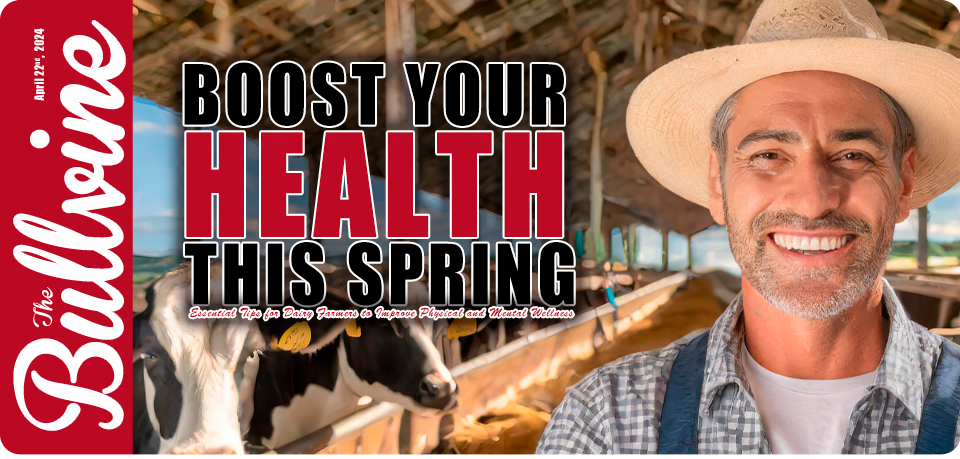







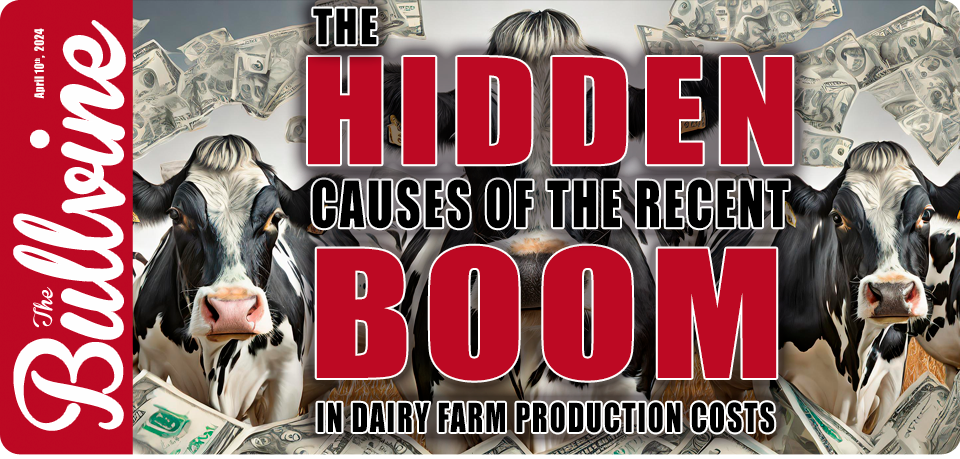
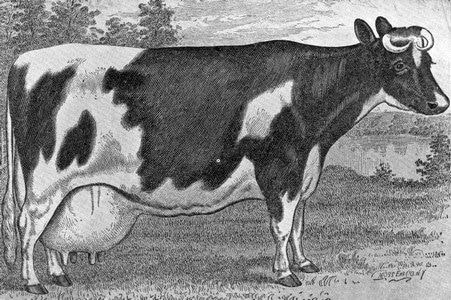
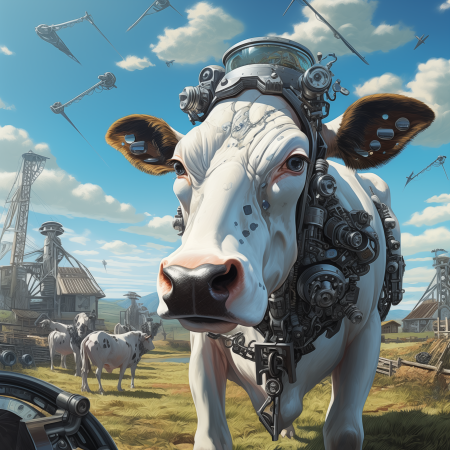 Precision Livestock Management
Precision Livestock Management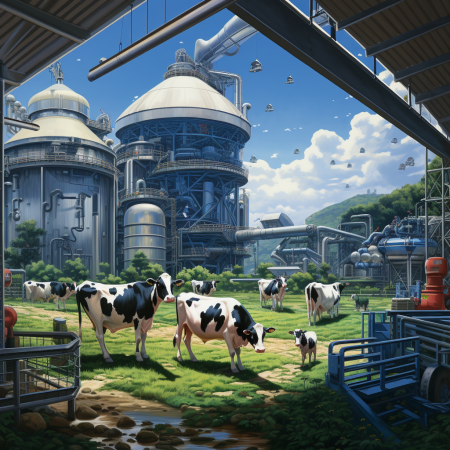 Feed Management
Feed Management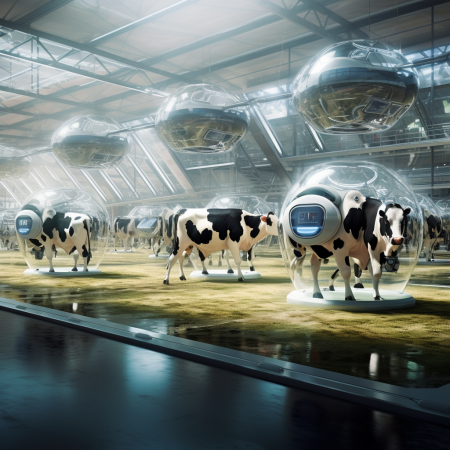


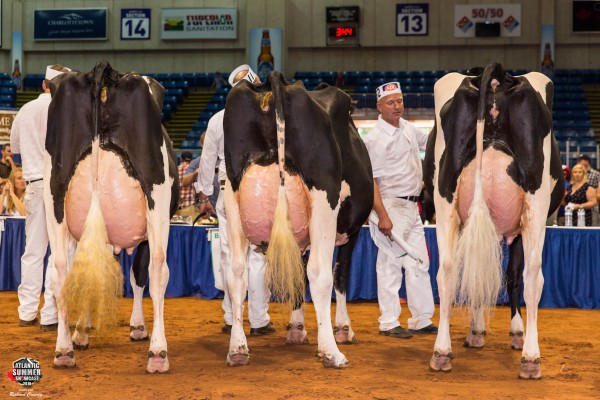
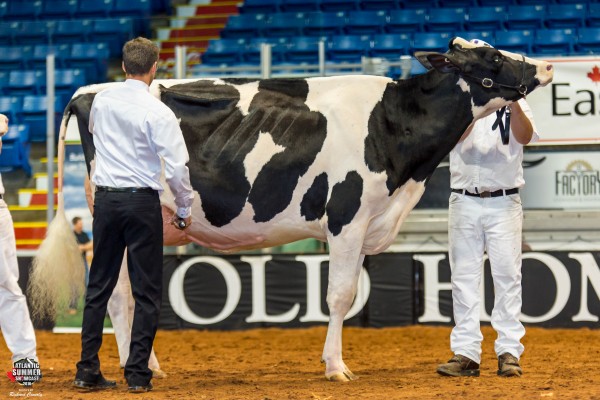
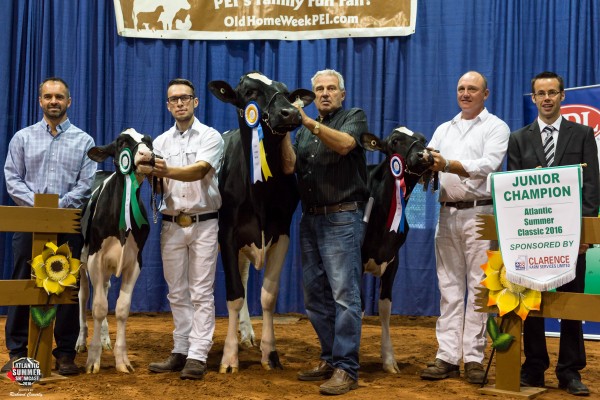
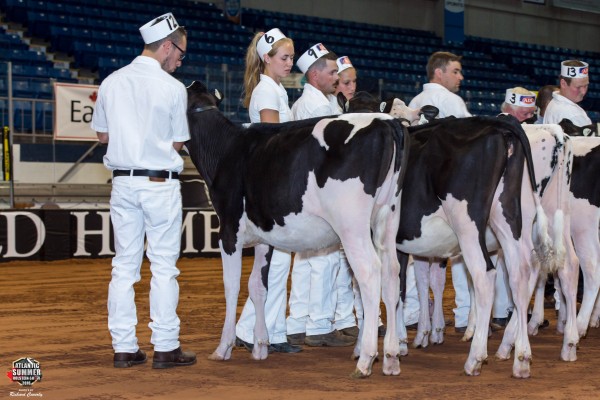

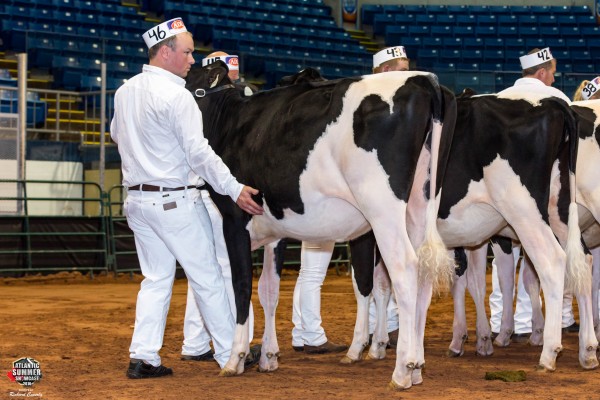
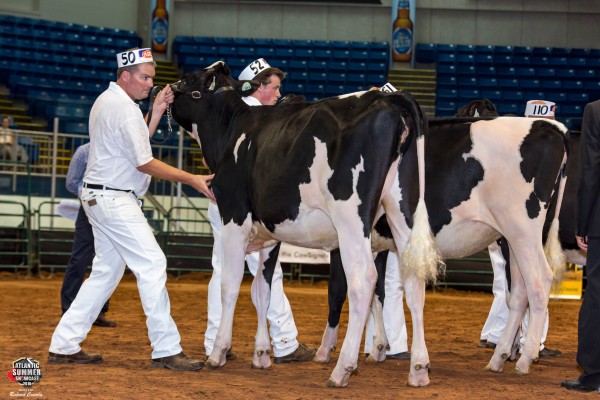

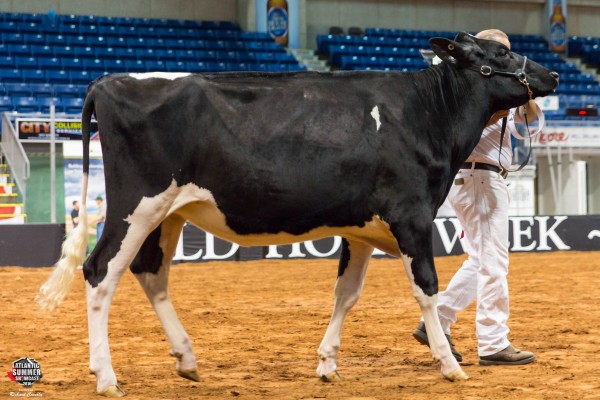
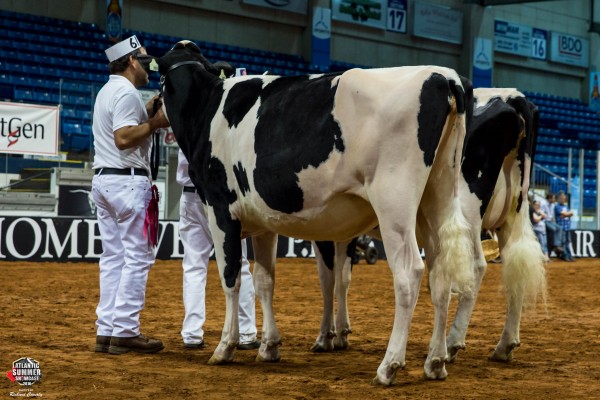
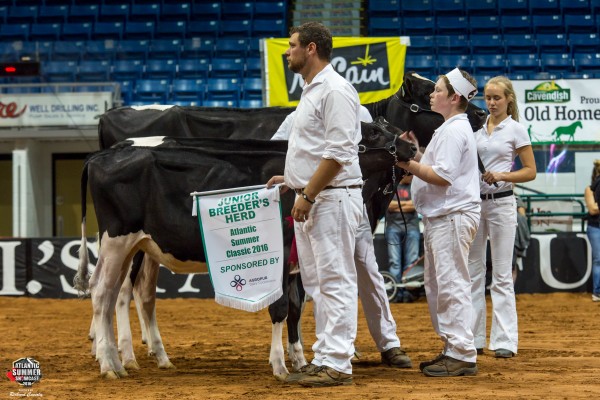
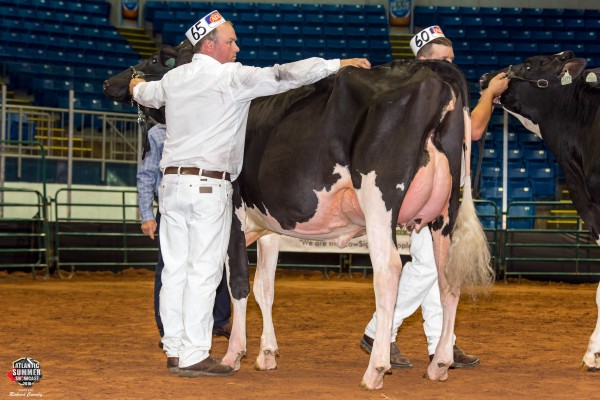
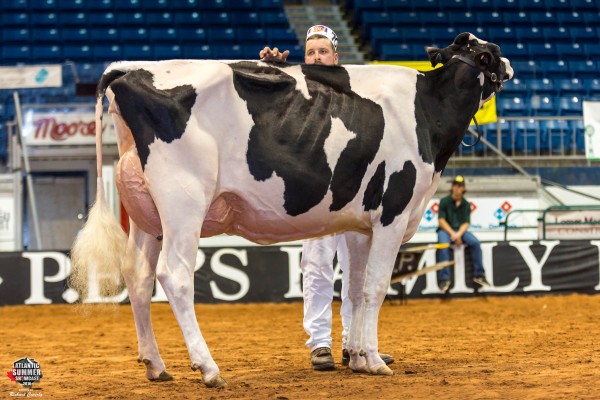
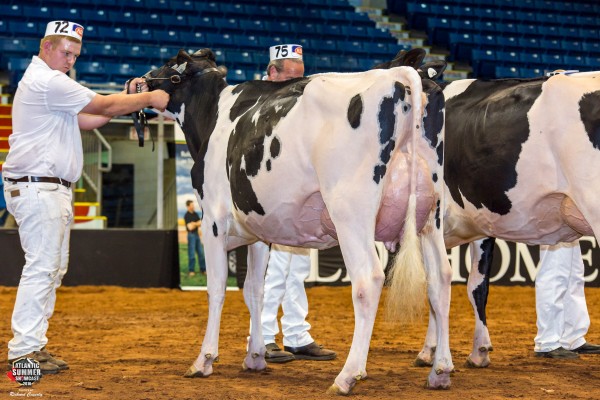
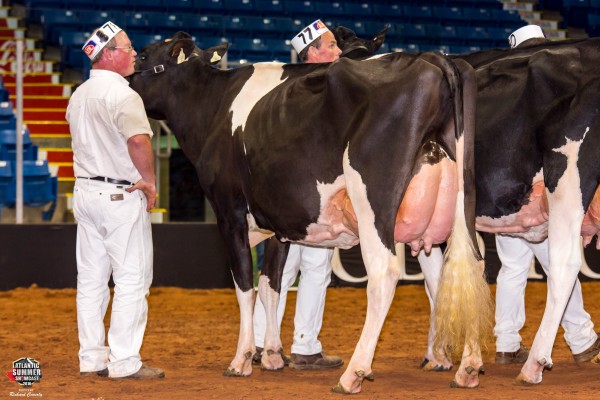
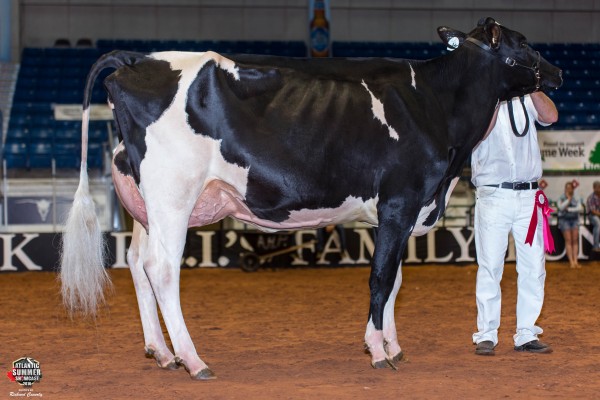
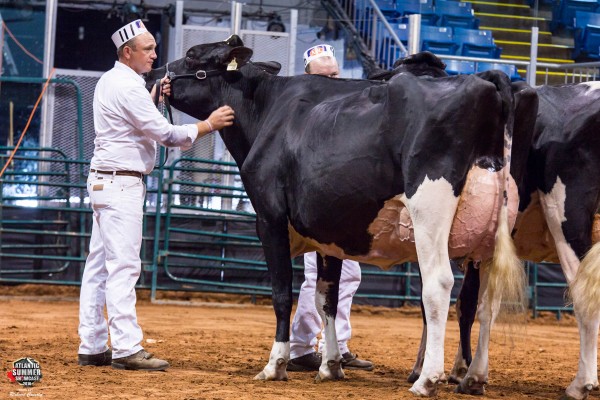
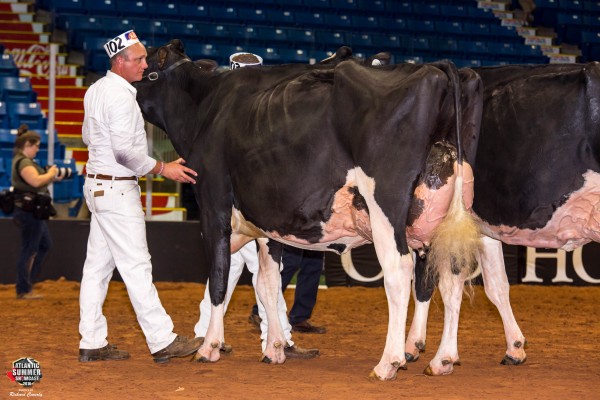
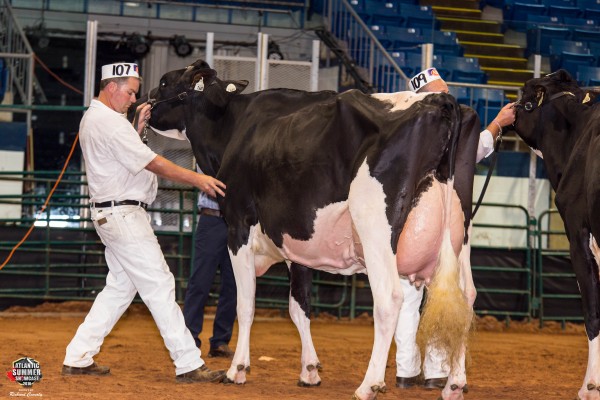





























![11217520_768249966619211_944530856715628670_n[1]](https://www.thebullvine.com/wp-content/uploads/2015/11/11217520_768249966619211_944530856715628670_n1-600x600.jpg)




